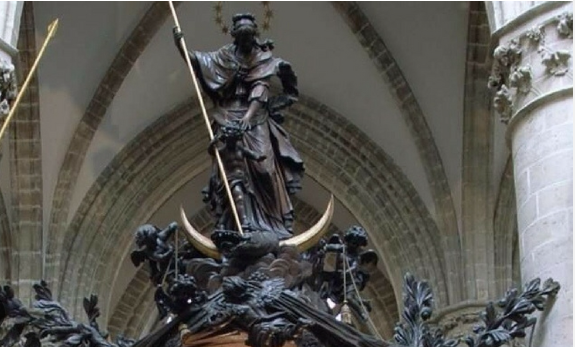The 100th anniversary of Our Lady’s visits to the three shepherd children at Fatima, Portugal, was in 2017. In addition, 2017 marked the 300th anniversary of Freemasonry’s founding with the establishment of the Grand Lodge in London in 1717. The significance of the two anniversaries for humanity could not be further apart, according to the Catholic Church.
Through the motherly solicitude of the Blessed Virgin Mary, the Queen of Heaven, the Marian apparitions at Fatima represent God’s supernatural intervention to call a lost humanity to repentance from the evils of apostasy and war. The establishment of the first Lodge, and the subsequent history of Freemasonry, represent an idolatrous adoration of man, a luciferian rejection of God, and an unwavering hostility towards Our Lord Jesus Christ and his Church.
In 1917, the year of the Marian apparitions at Fatima, Freemasonry celebrated its 200th anniversary. It was characterized by violent Masonic attacks on Our Lady of Fatima and the Pope in Rome.
Sr. Lucia had personally verified Father John de Marchi’s account of the miraculous events at Fatima which the hostility of local freemasons towards Our Lady and the three visionaries at Fatima. The mayor of Vila Nova de Ourem, Arthur Santos, who persecuted and psychologically tortured the three children, was a member of the Masonic Lodge of Leiria and founded a new lodge in his hometown.
The Masonic Lodge in Santarem, a nearby town, became a focal point for atheistic opposition to Our Lady of Fatima. In September 1917, men from Santarem marched with men from Vila Nova de Ourem to the Cova da Iria, the site of the apparitions. They then used axes to attack the makeshift shrine. According to the following report in a local newspaper:
“With an axe they cut the tree under which the three shepherd children stood during the famous phenomenon of the 13th of this month. They took away the tree, together with a table on which a modest altar had been arranged, and on which a religious image (of Our Lady) had been placed. They also took a wooden arch, two tin lanterns, and two crosses, one made of wood and the other of bamboo-cane wrapped in tissue paper. These prize exhibits, including, as a footnote explains, a bogus version of the tree, were placed on exhibit in a house not far from the Seminary at Santarem, and an entrance fee exacted from those who wished to enter and be entertained at the widely advertised religious farce. One disappointment to the sponsors was the fact that not everyone, even among the Church’s active critics, agreed it was amusing. The profits from the exhibit were to be turned over to a local charity, but the beneficiaries said very politely, “Thank you; no.”
Later, in the evening, a blasphemous procession was held. The parade was headed by two men thumping on drums (a newspaper account reveals), while just behind it came the famous tree on which the Lady is said to have appeared. Next came the wooden arch, with its lanterns alight, then the altar table and other objects which the faithful had placed upon it at the Cova da Iria. To the sound of blasphemous litanies, the procession passed through the principal streets of the city, returning to the Sa da Band Eira Square, at which point it broke up.”
One of the child visionaries, Lucia, later expressed relief that the Masons had attacked and destroyed the incorrect tree.

